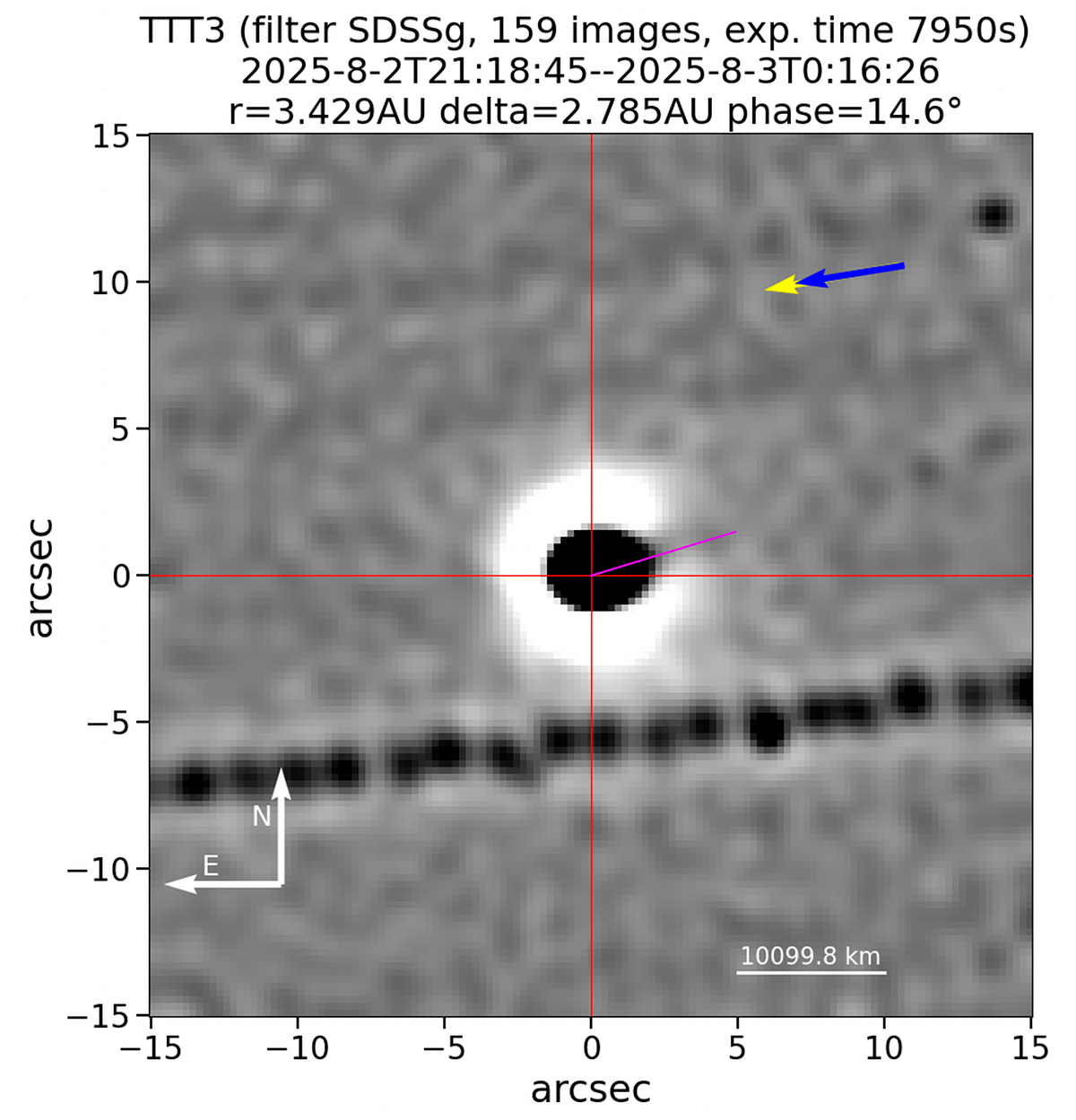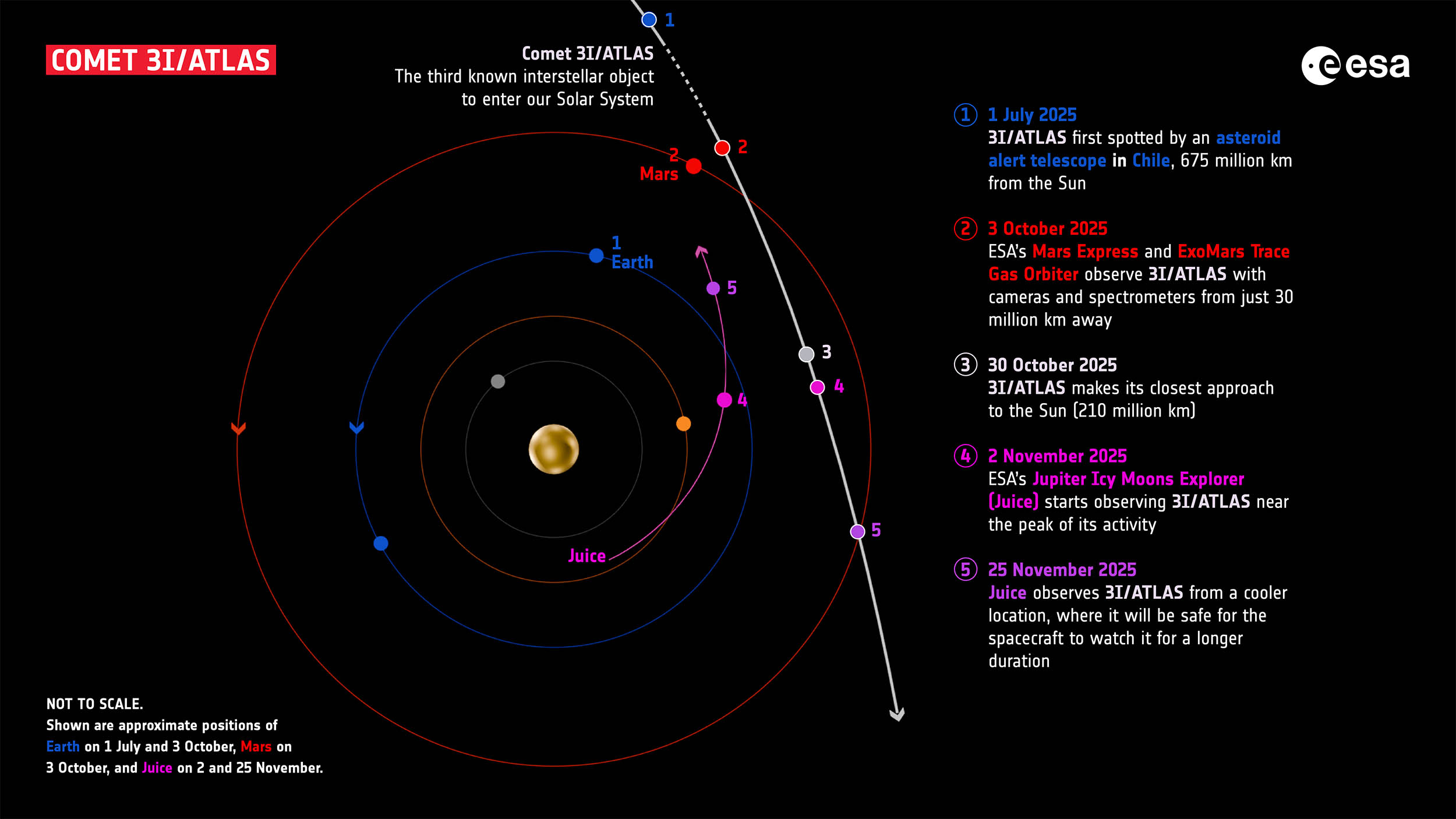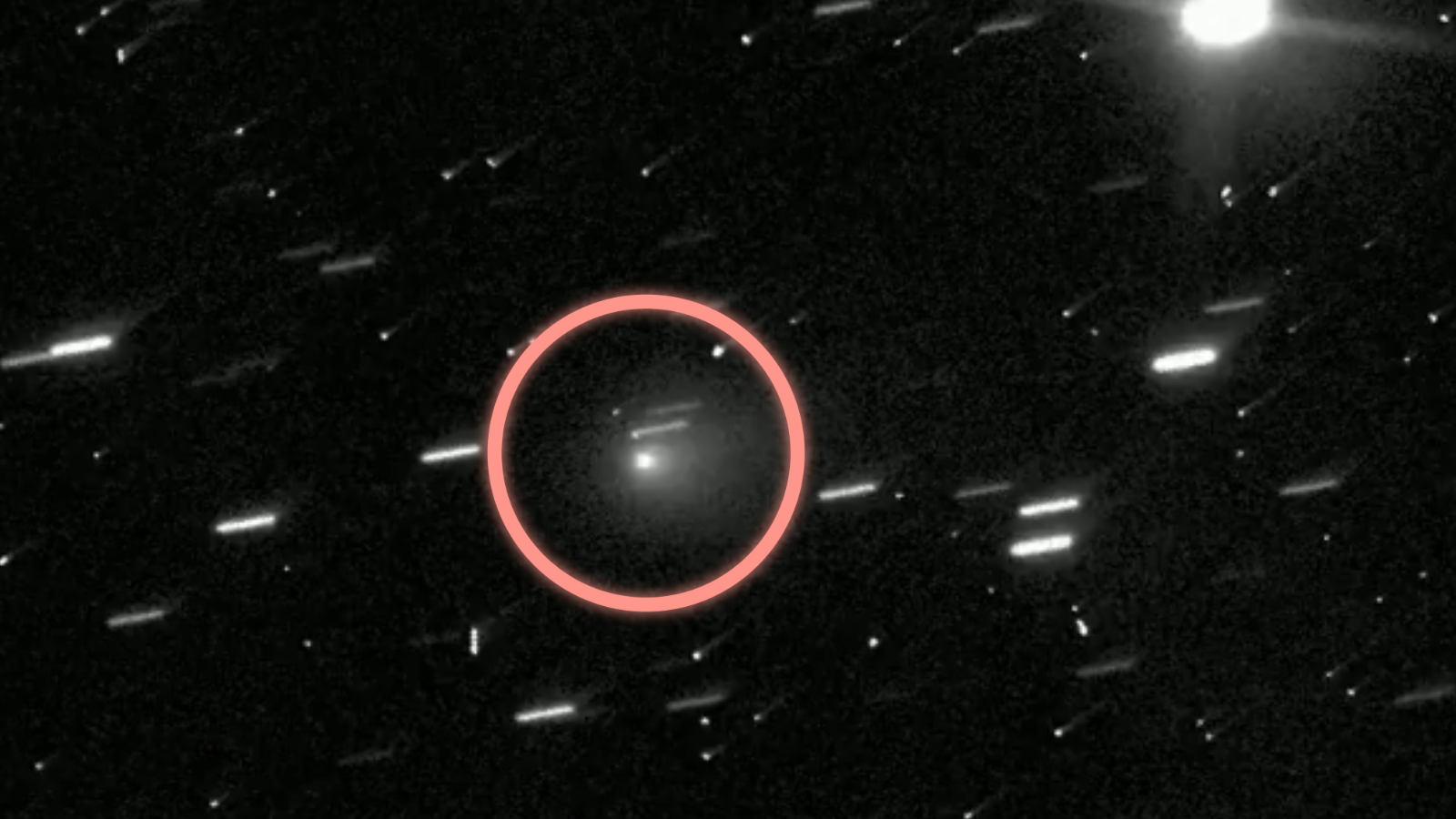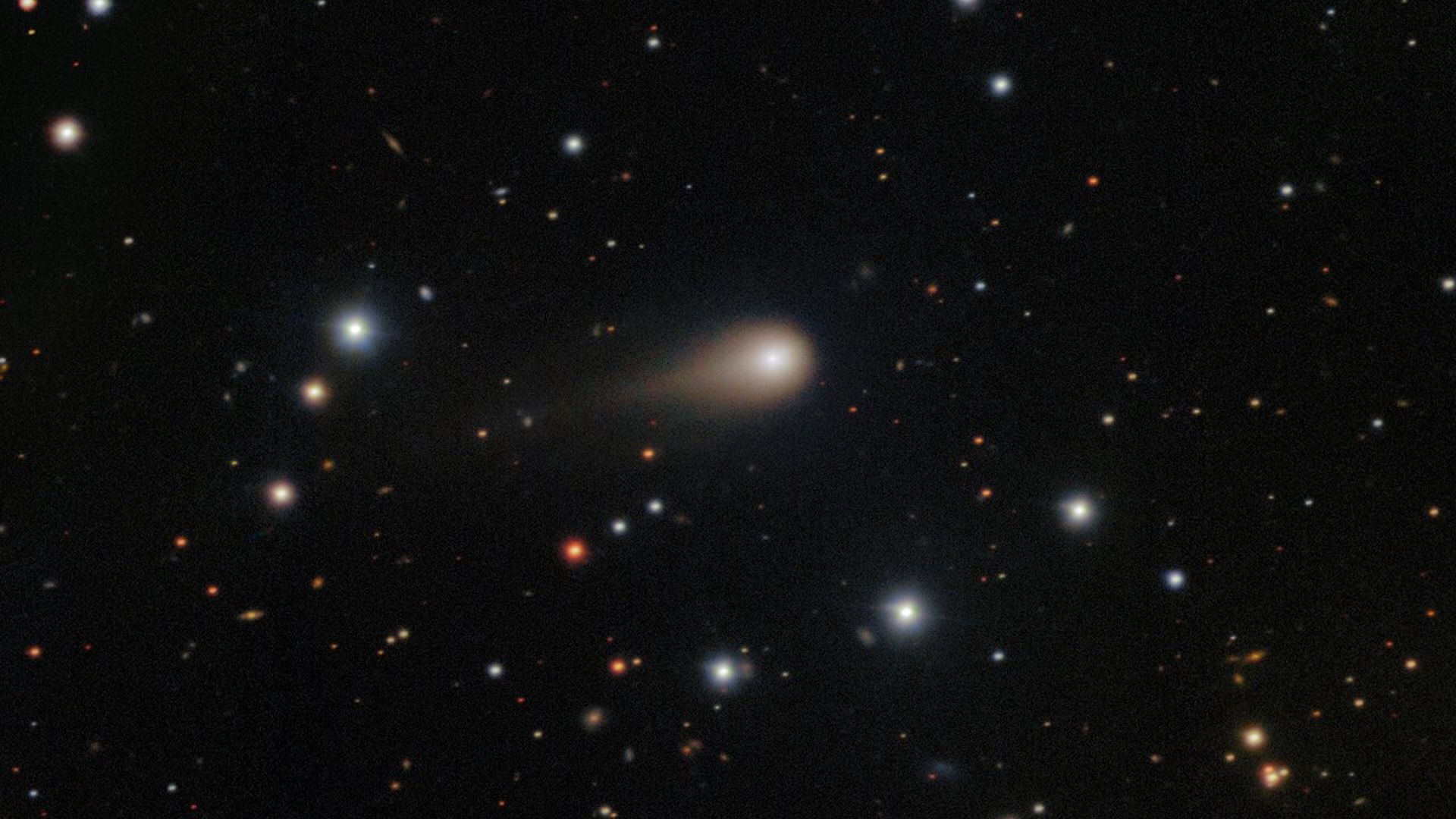Press enter or click to view image in full size An image of the interstellar object 3I/ATLAS from the Two-meter Twin Telescope in the Canary Islands, Spain. The image, composed of 159 exposures of 50 seconds each, was taken on August 2, 2025. It shows a faint jet pointed towards the Sun (marked by a purple line), extending out to …
Read More »Tag Archives: 3IATLAS
Keck Observatory Finds Odd Features In Spectra Of Interstellar Object 3I/ATLAS
Astronomers analyzing observations of interstellar comet 3I/ATLAS using the W. M. Keck Observatory have discovered further unusual features of our third interstellar visitor, and confirmed the presence of a rare “anti-solar tail”. On July 1, 2025, astronomers at the Asteroid Terrestrial-impact Last Alert System (ATLAS) spotted an object making its way through our Solar System. That’s no surprise, given the …
Read More »New Images of Nickel and Cyanide Around 3I/ATLAS from the Keck Telescope | by Avi Loeb | Oct, 2025
Press enter or click to view image in full size An image of 3I/ATLAS on August 24, 2025, taken by the Keck Cosmic Web Imager (KCWI) on the Keck II telescope in Hawaii at the wavelength range of 0.3425 to 0.55 micrometers. The yellow arrow points in the direction of the Sun. (Credit: W. B. Hoogendam et al. 2025) A …
Read More »Interstellar Comet 3I/ATLAS Is Spewing Water Like a Cosmic Fire Hydrant
Comet 3I/Atlas continues to be full of surprises. As well as being only the third interstellar object ever detected, new analysis shows it is producing hydroxyl (OH) emissions, with these compounds betraying the presence of water on its surface. This discovery was made by a team of researchers at Auburn University in Alabama using NASA’s Neil Gehrels Swift Observatory, and …
Read More »Mars orbiters capture closest images of rare comet 3I/ATLAS
In early October, astronomers spotted something ancient and mysterious gliding past Mars. It was not a spacecraft or satellite, but a visitor from beyond our Solar System – an interstellar comet. Comet 3I/ATLAS is only the third interstellar comet ever observed. These types of comets are true outsiders from deep space. They were born around a completely different star, long …
Read More »The Gravity of 3I/ATLAS. As the interstellar object 3I/ATLAS… | by Avi Loeb | Oct, 2025
Press enter or click to view image in full size The men’s 100-meter dash final at the London 2012 Olympic Games. (Credit: Wikimedia) As the interstellar object 3I/ATLAS passes through our cosmic backyard, bounded by the orbits of Mars and Earth around the Sun during the month of October 2025, the time is ripe to evaluate its gravity. A good …
Read More »“We’re Reading A Note From Another Planetary System”: Interstellar Comet 3I/ATLAS Found Losing Buckets Of Water Every Second
Comet 3I/ATLAS is the third interstellar visitor and continues to be a treasure trove of information about the condition of its formation. As it speeds through the Solar System, telescopes have been pointed at it, revealing new tidbits about this fascinating space rock. Just recently, we have learned about the unusual ratio of nickel to iron (both common in comets); …
Read More »Interstellar comet 3I/ATLAS is leaking water like a ‘fire hose running at full blast,’ new study finds
A rocky visitor from beyond our solar system is leaking water like a “fire hose running at full blast,” a new study reports. Using NASA’s Neil Gehrels Swift Observatory, scientists have for the first time detected the chemical fingerprint of water spilling from interstellar comet 3I/ATLAS, only the third known object from another star system ever observed passing through our …
Read More »Spacecrafts photograph rare interstellar object 3I/ATLAS. Here’s what we know
Interstellar object 3I/ATLAS is on the opposite side of the sun from Earth – but several spacecraft are in the perfect position to get a closer look. As 3I/ATLAS warps and grows the closer it gets to our solar system’s star, public fascination with the unusual cosmic outsider only seems to become stronger. The object is one of only three space objects originating from …
Read More »Interstellar comet 3I/ATLAS is losing water ‘like a fire hose’ on full blast — and it’s ‘rewriting what we thought we knew’ about alien star systems
The interstellar comet 3I/ATLAS began blasting water “like a fire hose” before it was anywhere near the sun, according to a recent study. Researchers observed the comet scattering water unusually early in a discovery that sheds light on how the building blocks of life are distributed across other planetary systems. Initial James Webb Space Telescope observations have suggested that 3I/ATLAS …
Read More »








